Read Reviews
The Best Gardening Gloves
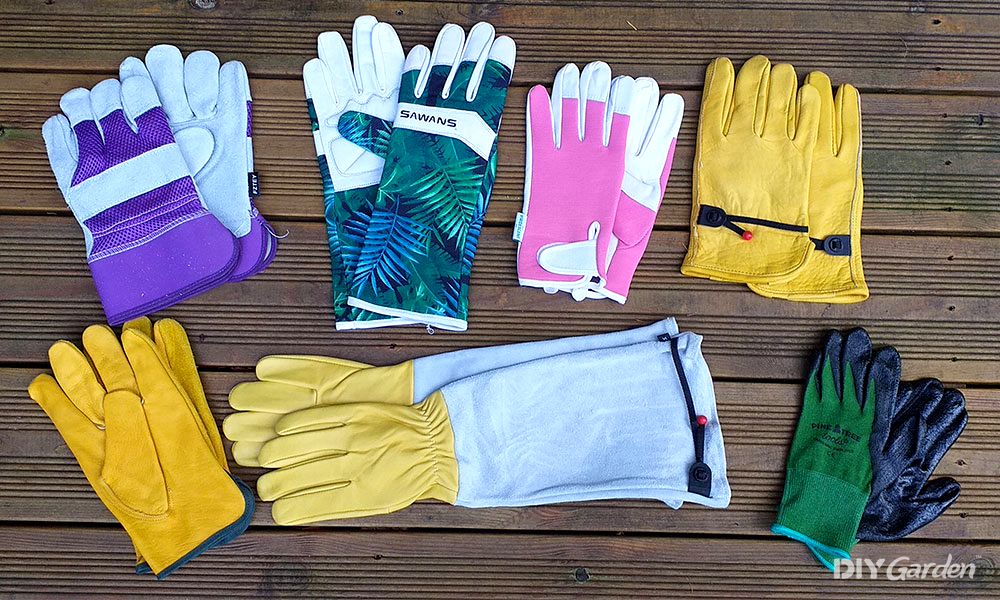
-
Best leather gardening gloves - UneedMe Leather Gloves With Wrist Tie
-
Best value option - Pine Tree Tools Gardening Gloves
-
Best gardening gloves for women - Pink Viridescent Leather Gardening Gloves
-
Best gardening gloves for thorns - Olsen Deepak Gauntlet Gardening Gloves
-
Best heavy duty gardening gloves - XNDRYAN Thorn Proof Gardening Gloves
Gardening Glove Reviews
1. UneedMe Leather Gloves With Wrist Tie
Best leather gardening gloves
- These gardening gloves fit really well and don't restrict your movement
- The wrist strap is so useful in preventing branches or thorns catching you further up your arm
- They're very comfortable to wear
- Really good at protecting your hands
- Not the most attractive on the market, but that's not their target either!
- Design
- 4.5
- Comfort
- 5
- Grip
- 5
- Durability
- 5
- Value for Money
- 5
These short leather heavy-duty gloves have a wrist tie and reinformed palms for heavy-duty garden jobs. I think the wrist strap is going to make all the difference! Let’s try them out.
I wasn’t expecting a great deal, but they fit pretty well. The finger length is a good medium fit.
These yellow rigger gloves are not inspirational, but the bright yellow serves several purposes. That’s finding them again after the tea break, and seeing exactly where your hands are when using power tools.
They have double-reinforced stitches in tough nylon, a leather patch over the palm, and shaped wrists for easy movement.
By far the best aspect is the wrist strap. Other gloves should take note of this life-changing addition!
The wrist strap is made from black nylon and it works like a cable tie. Pull the red tag and it tightens as much as you need. I had to pull through 10 cms for a good fit.
The strap stays in place until you pull its plastic fastener back. It didn’t loosen during my brushing up or during the violent removal of an overgrown buddleia.
Good design – done well.
The top-notch fit and adjustable wrist strap meant these were extremely comfortable to wear.
The leather is supple, moves easily, and there’s minimal excess leather in the fingertips. Sorry to go on about it, but this really is a bugbear of mine!
My hands stayed dry and didn’t sweat – top marks for comfort.
The suede leather palm created rugged extra grip which was handy for raking and brushing up, and the wrist strap made sure I had plenty of safe grip on my tools.
Loose gloves mean you can lose control of your tools, but these stayed put with minimal if any slippage.
After an afternoon’s work, these gloves barely had a mark on them and the stitching was good as new despite a fierce struggle with the overgrown patio buddleia that did not want to come out.
I tugged the fingers apart and tried to break the nylon strap but they stayed firmly in place.
After clean-up, the leather went crispy as always, but it wasn’t long before they loosened up. Some leather balm instantly made them supple again.
I am impressed by these gloves. They are heavy-duty thorn-proof DIY gloves with expert level control – all due to the inclusion of a simple wrist strap!
The following day I wanted to dig over a border and these were the gloves I chose from all the pairs I tested.
That might change in summer when I need something lighter, but for autumn and winter, these are an excellent choice.
Did you find this review helpful?
2. Pine Tree Tools Gardening Gloves[ SAVE 6% ]
Best value option
- There's great movement and breathability in these gloves
- Extremely comfortable to wear
- Good for gripping gardening tools
- Best suited to lighter gardening jobs
- The touchscreen aspect of these gloves doesn't work very well if they're dirty
- Design
- 5
- Comfort
- 5
- Grip
- 5
- Durability
- 4
- Value for Money
- 5
These stretchy green gloves are made from bamboo with rubber waterproof palms. They feel a bit flimsy to me, but the proof is in the tests!
These lightweight bamboo gardening gloves have bamboo uppers and rubberised palms with an elasticated wrist. The rubber coating doesn’t cover the knuckle area which is excellent as it allows plenty of stretch.
Although it doesn’t mention it on the packaging, I wondered if they were touch screen compatible so I tested them on my Samsung phone.
I unlocked, typed, and opened tabs with no problem, but when the gloves got dirty (like after 30 seconds) the touchscreen didn’t work. It also doesn’t work when the gloves are wet. Hey-ho. I guess that’s the same with all touch screen compatible gloves.
These are easily the most comfortable gloves I’ve used. The bamboo uppers are breathable but stop damp dew soaking through. The rubberised palm is stretchable and the fingertips don’t have any excess material to get trapped under my nails.
They’re a good fit for my standard lady medium hands, but perhaps a little snug. I could get away with a large in these too.
Wow. I’m impressed by the grip on these.
The rubberised palm and fingers provide a huge amount of grip. I had no fear at all holding loppers over my head and swinging the rake around. If you have a tough-to-open jar pop these on and it’ll open in no time.
I’m pleasantly surprised by these gloves. I thought they would fall apart, but the rubber palms were still in excellent condition after use and the bamboo material washed thoroughly clean. They don’t turn crispy and immovable like leather gloves either.
You couldn’t use these for heavy-duty landscaping because they’re not thick enough to protect you, but for lightener gardening jobs they are excellent.
I really like leather-free gloves. I’m always suspicious the leather is taken from an unsustainable potentially cruel source, so it’s great to use eco-friendly bamboo. If you feel the same – these are the gloves for you.
I clipped bushes, raked the lawn, and pruned back tall trees with loppers in these gloves and they still look good as new.
I think these gloves are best for re-potting, planting seeds, and protecting your hands when you’re lawn mowing, especially in the summer when it’s hot but you still need grip. They’re great value for money and I’ll use them again for sure.
Did you find this review helpful?
3. Pink Viridescent Leather Gardening Gloves
Best gardening gloves for women
- Vibrant and attractive - won't get lost in the grass or your borders!
- Good stitching on the leather indicates they're well made
- These gloves have good grip, even in wet weather
- Not great protection against thorns
- Design
- 5
- Comfort
- 4
- Grip
- 5
- Durability
- 4
- Value for Money
- 4
These gloves are leather palmed with bright pink material uppers made from sponge, polyester, and lycra with a Velcro wrist strap.
These gloves appear to be good quality, so let’s see how they hold up to some grass clipping.
I wouldn’t usually go for pink gloves, but it’s occurred to me that pink is a great idea. How often have I taken my gloves off and promptly lost them in the grassy border?
In design terms, the leather is well cut and well stitched on the inside. There’s no extra material hidden inside that digs beneath your nails. The finger and palm length are spot-on for my medium-size hands.
I like the soft material uppers because they allow easy hand movement and stop my hands sweating. The small amount of padding isn’t enough to prevent a nasty bump, but it was enough to keep my hands dry during lightweight jobs.
These gloves would best suit female hands as they are pretty slim-fitting and on the petite side.
These gloves are very comfortable. The lycra content gave them plenty of stretch, and I had a firm grip on my tools.
The leather fingers are soft enough to make a fist, but they are thick enough to feel protected. I hand brushed a pile of stones with these, cut lawn edges, and moved the grass clippings all without issue.
I also moved a toad who had no complaints about his transportation.
I like the bulk-less fit of these gloves, they are stretchy, breathable – and yes – they can stay on to drink tea.
On the downside, the uppers are only made from spongy material, so there’s no protection against bumps or thorns.
Because they fit well around the contours of my hands, the grip was excellent. My thumb had enough room to move and the leather palm was grippy enough to safely use the garden shears in damp autumn grass.
There’s a Velcro fastening that tightens around the wrist to keep the gloves firmly in place without rubbing, so they felt safe and provided a good amount of grip despite the wet conditions.
I think these will last if you look after them and use them for light gardening jobs such as clipping, cutting back, and planting. Heavy landscaping and rubble work will pull them apart after a few hours.
After use, I washed them down with soap and water and left them to dry. The leather immediately went crispy, but with some fist clenching and leather balm they softened up again quickly.
These pink gloves are made for lighter gardening jobs including grass clipping and trimming back plants. The fit is spot on and the grip is sound.
I’d be happy to buy these gloves. They’re a good all-round blister preventer for the majority of light garden jobs, but I’d like to see more protection across the knuckles.
Did you find this review helpful?
4. Olsen Deepak Gauntlet Gardening Gloves[ SAVE 15% ]
Best gardening gloves for thorns
- Really strong and durable against even the toughest of thorns
- Good wrist and forearm protection
- Excess material in the fingertips indicates not enough care taken during the manufacturing process
- Design
- 4
- Comfort
- 3.5
- Grip
- 5
- Durability
- 4.5
- Value for Money
- 4
These gloves have leather hands and long leather forearm protectors. They look like good gloves to prune back thorny bushes – good job I have an overgrown pyracantha to tackle!
It took a while to get hold of these gloves as my son decided they made excellent ‘Thanos’ gloves and spend ages trying to take over the world.
Eventually, I was allowed a go!
The design is well thought out. The hand area up to the wrist is made from soft pliable leather that’s gathered at the wrist to help keep the glove in place.
The arm pieces are elbow length with tough, easy-pull straps to tighten the fit. They’re easy to put on wearing thin sleeves and once tightened they fit well.
Not bad for medium sizing, but they’re a touch too big. I could probably go for a small in these.
There’s a fair amount of excess material in the fingertips that should have been removed after the seams were sewn. This material gets under your nails and pushes them back, which is uncomfortable.
It’s not enough to put me off using them, just something to be aware of if you spend a lot on manicures.
On the upside, the arm length provided some extra warmth on the first chilly day of November.
There’s a pull-tight cord at the elbow which tightens the gloves like a tourniquet.
It works really well as it’s adjustable to fit your size and prevents that horrible moment when you pull your arm back from the thorns but the glove stays put.
This coupled with the easily movable thumbpiece and soft-enough-to-make-a-fist leather means these gauntlets provided excellent grip on my secateurs in the depths of a pyracantha. That’s the last place you want to drop your tools!
They performed well against the thorns and didn’t rip at the stitching despite my best efforts to pull them apart. They also stood up to a thorough wash with hand soap.
There are some tiny nicks in the leather from the thorns, but bear in mind pyracantha is called ‘the burglar bush’ for a reason – its thorns are huge. I’m not surprised it left some glove wounds.
I’d say these are good value gloves. They protected my hands and forearms against the most violent type of thorn, and the tourniquet-style strap kept them in place.
I’d recommend them for thorny gardening and if you have a cat that really hates its vet’s basket or taking a pill – you’ll stay well protected in these too.
I’ll keep this pair for thorny jobs without a doubt. They’d make a good gift for a gardener with lots of tough pruning.
My only gripe is that there’s a bit too much excess leather gathering inside the fingertips. I feel more excess leather could have been trimmed off for a better fit.
Did you find this review helpful?
5. XNDRYAN Thorn Proof Gardening Gloves
Best heavy duty gardening gloves
- Really comfortable to use for long periods of time
- These gloves have lots of grip
- Very strong and durable
- Not the most attractive!
- Elastic on the wrist not quite tight enough to stop water or dirt coming in
- Design
- 3
- Comfort
- 4
- Grip
- 3.5
- Durability
- 4
- Value for Money
- 4
These gloves look safe – exactly the type you’d buy to protect against thorns, brambles, bites, or litter. Let’s see if they perform as sturdily as they look.
These gloves are pretty standard-looking bright yellow rigger gloves – the type I see roadworkers and landscapers using. If you like chic design, these aren’t for you!
Their bright yellow colour is easy to spot in the garden and the double stitching looks well done. There are no flaky bits or loose threads which makes me think these are better than bog-standard rubble gloves.
The uppers are breathable, flexible and the insides are smooth – there’s very little leather excess inside at the fingertips.
Marketed as unisex but they’re too big for my medium hands so I need a smaller size. The little finger has a good 4 cms of extra length in it.
There’s a very slight bit of elastic at the wrist, but it’s not enough to stop debris and water from going in.
There’s a lot of excess material in the nail area and there’s no padding – but they were oddly comfortable! The leather is soft enough to easily make a fist and they kept my hands bone dry in the wet autumn grass.
After an hour’s work, the leather was extremely comfortable. I wish I had a smaller size because they are great lightweight comfortable gloves for heavy-duty jobs,
I used them to rake, clip old shrubs back, and scrub down a hedgehog house.
They provided plenty of grip for the raking and clipping jobs despite the loose fit, but I couldn’t use them for the hog house as they’re too bulky and you can’t feel through them to undo clips.
These gloves use nylon thread which is really tough, I couldn’t pull stitching loose and they showed no sign of wear, other than dirt, after use.
I think these will last a long time with some aftercare. A bit of leather cream on the palms and finger creases and they’ll get more comfortable each time.
There are two pairs of gloves in the bag so they’re great value for tough landscaping and heavy-duty jobs. There’s no finesse, just standard hard-working riggers that are surprisingly comfortable.
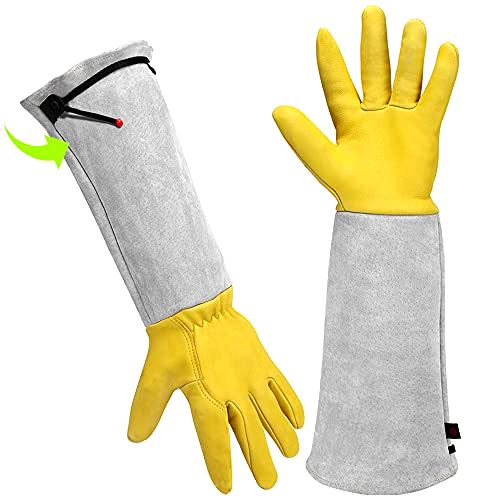
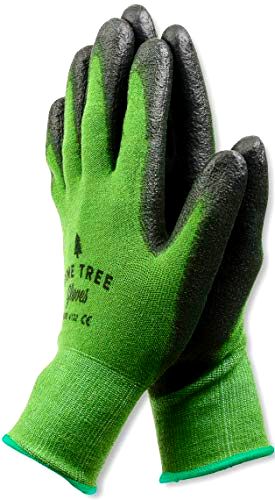
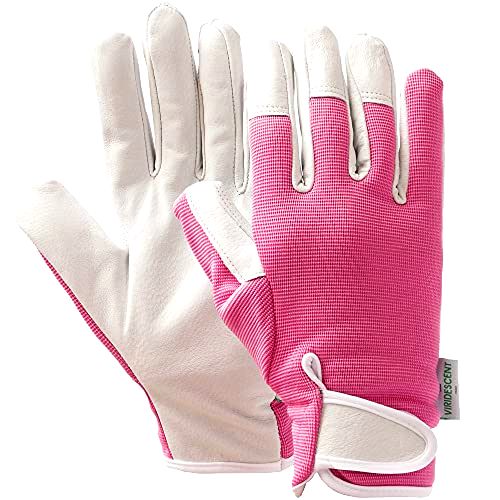
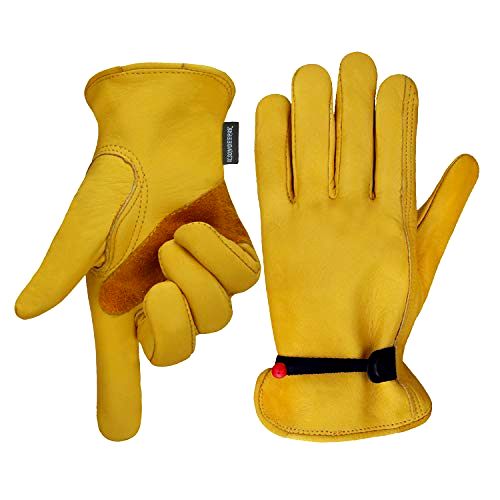
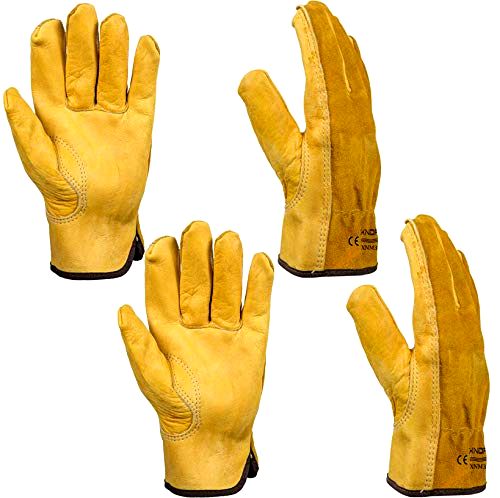
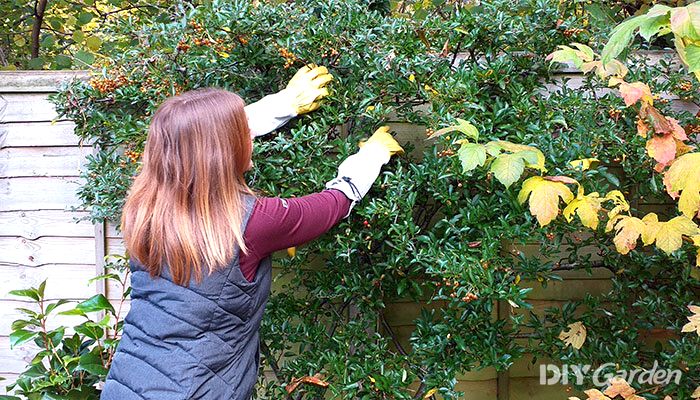
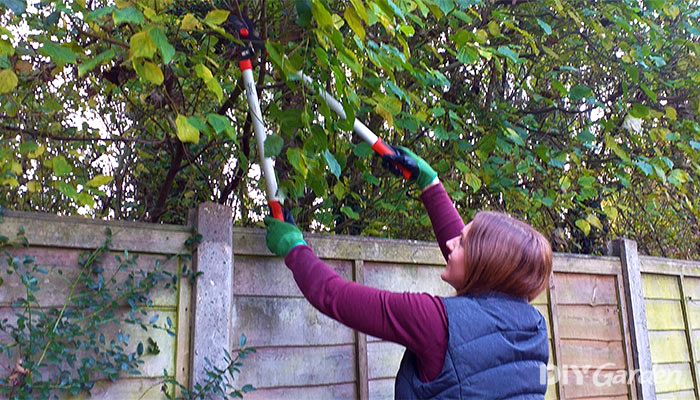
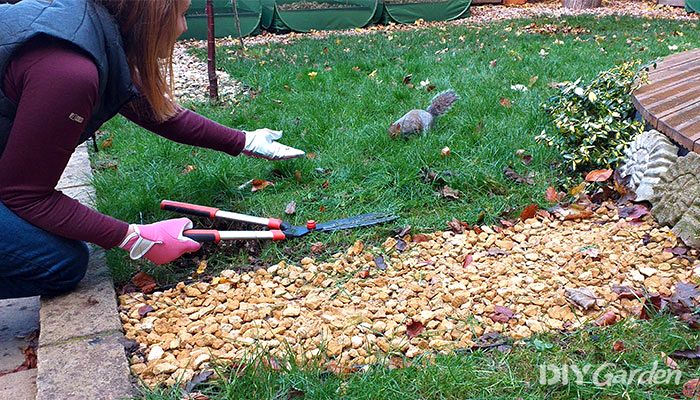
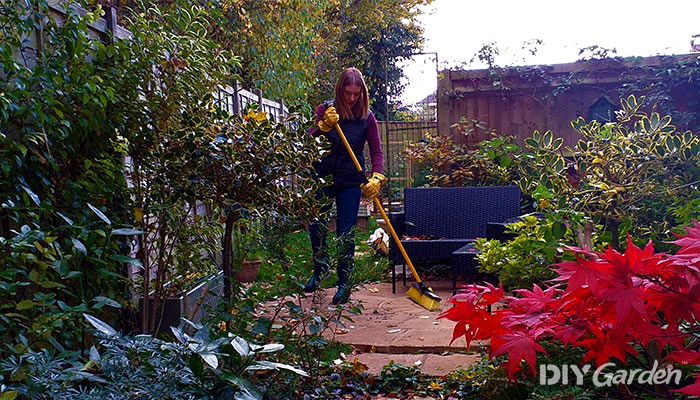
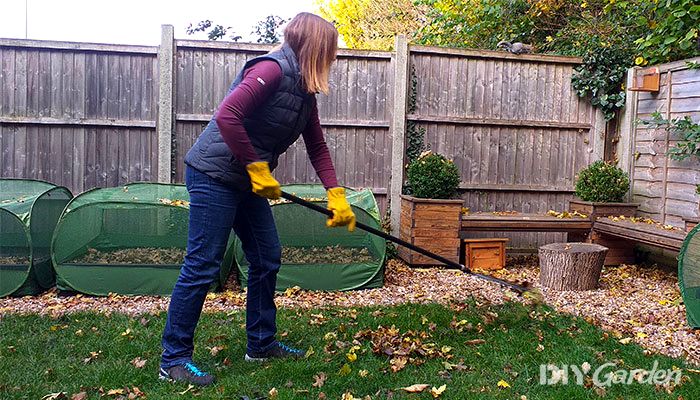

Share